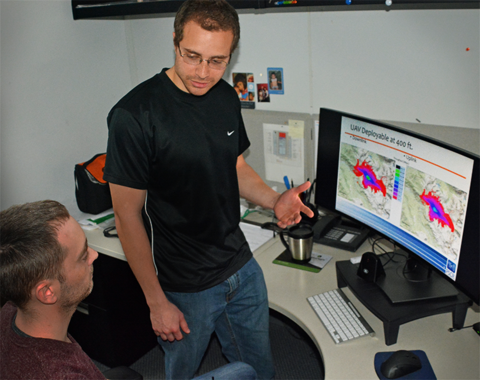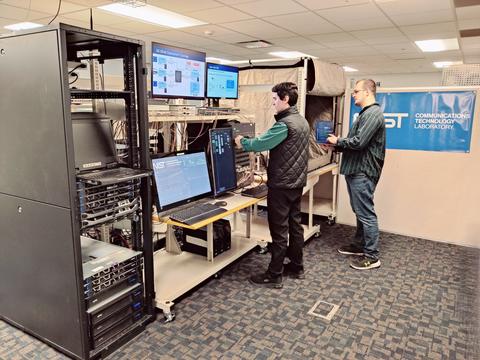
WHAT WE DO
The Wireless Networks Division work on next generation wireless communications impacts all CTL core programs: Public Safety Communications, Fundamental Metrology for Communications, Trusted Spectrum Testing, NextG (5G & Beyond) and Open RAN. The division also leads the NextG Channel Model Alliance, a nexus for global efforts to develop the future radio channels over which 5G and next-generation wireless networks will operate at data rates up to a thousand times greater than what is possible today. The diverse portfolio of work is possible thanks to an extensive collaboration network in the form of key partnerships within NIST and across industry, government, and academia.
AREAS OF EXPERTISE
The Wireless Networks Division specializes in two areas of wireless technology research and analysis:
- Communications networks and protocols, which involves data transport, routing, resource management, medium access control, and security.
- Digital communications, which looks at the essential technologies enabling communications networks, including signal processing, modulation, error control coding and channel modeling.
Across both of these competence areas, the division applies capabilities in performance measurements, model development, experimental testbeds and network prototyping.
MODELING & SIMULATION
Accurately characterizing the environments in which future network hardware and protocols will operate is a vital precursor to wireless network modeling and protocol development. Such modeling ultimately helps the industry identify potential cost-savings and sets realistic expectations for network coverage, capacity, scalability and performance.
The Wireless Networks Division channel modeling work employs existing and custom models applying mathematical analysis and computer simulation to factors affecting radio-frequency propagation such as environment characteristics, mobility, antenna height, and center frequencies. The division works with the CTL RF Technology Division in developing and enhancing channel sounders capable of completely characterizing channels operating at the high frequencies expected to be used in NextG systems. The Wireless Networks Division channel modeling experts use the measurements obtained from these sounders as inputs for their models. Subsequently, the systems engineers integrate the developed channel models into system-level simulators to develop, evaluate, and characterize the performance of new protocols and architectures.
EXPERIMENTAL TESTBEDS
While much of the work involves mathematical modeling and computer simulation, the experimental testbeds help validate the models, develop benchmarks, and take physical measurements of wireless systems and their key components. The Wireless Networks Division starts with commercial broadband devices (e.g., 5G new radio (NR) base station and user equipment), protocol analyzers and emulators, which provide a highly controlled, non-radiating environment to characterize how high-speed wireless devices transmitting over multiple channels in different environments might interact. But when requirements push past the boundaries of what is commercially available, the division develops solutions, such as the real-time spectrum monitoring system and Open RAN testbed using software-defined radios.

STAKEHOLDERS OUTREACH
As part of the program planning activities, the Wireless Networks Division continues industry and stakeholder outreach in order to identify additional measurements and metrology research and development (R&D) gaps in support of the development of wireless communication systems and standards.
NIST CTL has partnered with the National Science Foundation (NSF) to identify technical gaps critical to the sustained innovation of post-5G wireless systems. This project completed with the publication of NIST SP 1293.
Please visit the NextG Gap Analysis page for additional details.
SELECTED PUBLICATIONS





